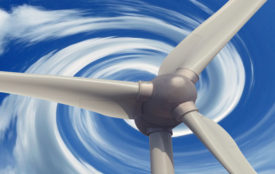China’s Wind Power Capacity Will Treble by 2025
While China’s installed wind capacity will treble from 115.6 Gigawatts (GW) in 2014 to an estimated 347.2 GW by 2025, global growth will begin to level off towards the end of the forecast period, with annual installations peaking at 56.8 GW in 2022, says.
The company’s latest report* states that China’s wind power landscape in 2025 will be dominated by onshore capacity, which will account for 334.7 GW, representing just over 96% of all installations, with offshore wind accounting for a mere 12.4 GW of installed capacity.
According to Harshavardhan Reddy Nagatham, GlobalData’s Analyst covering Renewable Energy, a bottleneck in China’s wind energy sector has emerged following an impressive growth period, which saw installed capacity increase almost twenty-fold from just 5.9 GW since 2007.
Nagatham says: “The slowdown has been caused by the inability of China’s underdeveloped electrical grid to accommodate the increasing number of wind turbines in remote areas.
“Although recent government efforts have supported the expansion and upgrade of the grid, future annual wind installations will not grow as much as before and will range between 20 GW and 22 GW each year during the next decade.”
Despite China’s relatively slow market, global wind installations will continue expanding to reach 962.6 GW by end of the forecast period, driven primarily by the Asia-Pacific (APAC) region.
Nagatham continues: “There will be sustainable future growth in India, Australia, Japan, South Korea, the Philippines, Thailand, and Taiwan, as APAC wind installations are forecast to increase from 148.2 GW in 2014 to 437.8 GW by 2025, accounting for approximately 45.5% of the global total.
“Wind installations will also gain momentum in South and Central America, with countries including Argentina, Brazil, Chile, Colombia, and Mexico adding up to 45.6 GW during the forecast period. The Middle East and Africa region, which is presently at a nascent stage of wind market development, will be the other significant contributor to capacity additions,” the analyst concludes.






